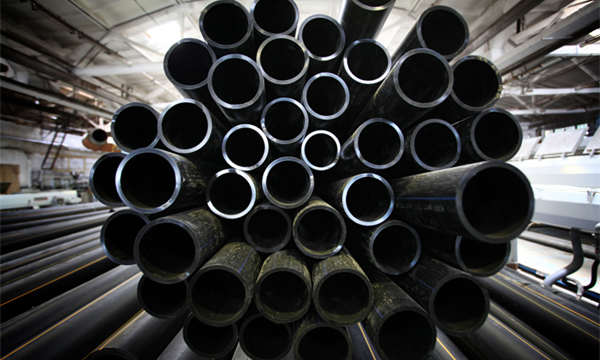If there are some defects in the seamless steel pipe, it will undoubtedly have a fatal impact on the quality of our products. So how to avoid these flaws? Then you need to understand the reasons for these defects. Let us discuss with you the specific reasons for the 8 major defects of seamless steel pipes.
1. Folding of seamless steel pipes
It is a kind that exists on the outer or inner surface of a seamless steel pipe, in a straight or spiral, continuous or discontinuous state. The main reason for the folds is that the quality of the pipe material is not good, there are folds in itself, or there are inclusions, serious scratches and cracks on the surface, and there are edges and corners at the grinding place, and folds appear after drawing. In order to avoid the occurrence of folding, the quality of the pipe material should be improved and attention should be paid to inspection and grinding.
2. Cracks in seamless steel pipes
Refers to the small cracks distributed in straight lines or spirals on the inner and outer surfaces of seamless steel pipes, with a depth of 1 mm or more, continuous and discontinuous. According to the analysis, the reasons are: the hot-rolled billet has subcutaneous air bubbles and subcutaneous inclusions, the steel pipe has cracks or deep pits before drawing, and longitudinal scribes are produced during hot rolling or during the operation of cold drawing. or scratches. Preventing the formation of cracks also lies in improving the quality of the tube blank and strengthening the inspection and grinding of the tube and tube material. At the same time, pitting, scratches and scratches should be avoided during the cold-drawing process.
3. Scratches of seamless steel pipes
The defect is characterized by longitudinally linear scratches of varying lengths on the inner and outer surfaces of the seamless tube, mostly groove-shaped, but may also be raised stripes. The main reasons for scratches (scribing) are: there is an inner scribing on the pipe material, which cannot be eliminated during drawing, the iron oxide scale remains on the steel pipe, the mold sticks to the steel, the strength and hardness of the mold are insufficient or uneven, and the mold is not uniform. Fragmentation and wear occur, the hammer head is bad, and the sharp edges and corners of the hammer head transition part damage the mold, etc. In order to prevent scratches and scratches, the quality of each preparation process before drawing should be improved, and molds with high strength, hardness and good finish should be used.

4. The pit of the seamless steel pipe
This is one of the most common surface defects of a seamless pipe. There are local depressions of different areas distributed on the surface of the steel pipe, some of which are periodic and some are irregular. The generation of pits is due to the iron oxide scale or other hard dirt being pressed into the surface of the steel pipe during the drawing or straightening process, or the peeling of the warped skin that originally existed on the surface of the steel pipe. The measures to prevent pits are to carefully inspect the pipe material and remove defects such as warping skin, keep the workplace, tools and lubricants clean, and prevent scale and dirt from falling on the surface of the steel pipe.
When there are smooth or sharp-edged spiral marks on the outer surface of the seamless steel pipe, the straightener should be checked. Due to the incorrect position of the straightening roller and the incorrect angle, the steel pipe rubs the shoulder on the edge of the straightening roller during straightening, and there are worn grooves on the straightening roller. pits.
5. Hemp surface of seamless steel pipe
It is characterized by sheet-like, point-like tiny pits appearing on the surface of the steel pipe. The main reason for the pitted surface is the pitting corrosion during pickling. After annealing, the iron oxide scale is too thick and straightened and then pressed into the surface of the steel pipe to form a pitted surface. The steel pipe is stored in a humid environment, and even after entering water, point-like rust occurs, and a pockmarked surface is formed after the rust spots are removed.
6. Spots of seamless steel pipes
Because the seamless steel pipe is not treated in time (such as drying) when it comes into contact with water (or water vapor) during processing or storage, the traces left after the water evaporates are called water spots, such as long contact time with water or corrosive water in the water. Rust spots can form when exposed to substances. Water spots generally have no depth, and rust spots often corrode the surface of the steel pipe, and there will still be pockmarked surfaces after removal.
7. The warped skin of the seamless steel pipe
It is characterized in that the inner and outer surfaces of the seamless steel pipe are partially separated from the metal matrix. The reasons for this are poor steel quality and subcutaneous bubbles, which are exposed after cold drawing. The warping skin produced during hot rolling is not removed from the tube blank until cold drawing. The original deep and angular transverse pits on the steel pipe are drawn to form warped skins.
8. Scarring of seamless steel pipes
The inner and outer surfaces of the steel pipe are not removed in time due to defects such as folding and warping, and in the subsequent processing, flakes that cannot be separated from the metal matrix are formed. , called scarring. Surface defects must be checked and removed in time to eliminate scarring.